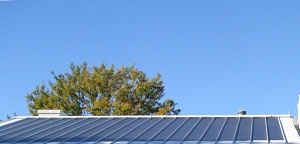Solar companies experience rough patch, part 2
 But despite all this turmoil in the solar industry, few companies have failed.
But despite all this turmoil in the solar industry, few companies have failed.
“So far, failure has been a bit less spectacular than some might expect,” Schmidtke said.
Companies are able to make changes to prevent larger failures. Solyndra’s closure of its first plant is one example. Evergreen Solar’s decision to outsource much of its production to make it more competitive is another.
“Companies that are troubled, that have liquidity problems, cash shortfalls, typically they would get taken out or acquired by a larger strategic buyer,” said Molchanov.
He offered the example of Advance Solar, which in November 2009, was running out of money and acquired by Applied Materials.
Another example he offered was the $400 million acquisition of OptiSolar by First Solar in March 2009.
“There are always companies that go bankrupt,” he said. “As a practical matter, the ones that go bankrupt tend to be extremely small. The companies are that are larger are able to find a buyer.”
“You haven’t seen that many really large companies shut their doors,” said Schmidtke. “You probably will start to see that in the future years.”
She said the stimulus might have extended—by two to three years—the timeline before some larger solar companies fail. But most solar companies probably will not be successful in the end, she said.
“I think it’s going to become more concentrated,” said Molchanov. “Some will succeed and expand, and some smaller ones will be acquired and concentrated or less fragmented.”
Story continues here.
Pictured: Amorphous silicon panels like these are still having problems with production costs. Photo: Meehan.



